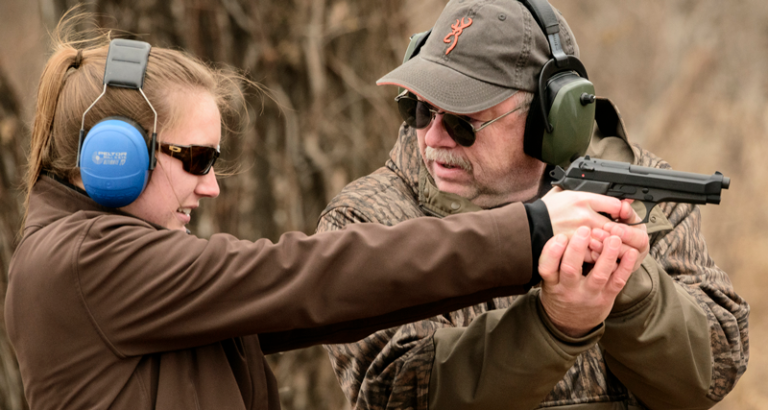
As with so many questions surrounding firearms law in Canada, the answer is; it depends.
There are three terms within this question which we'll need to address separately: carry, firearm and self defence.
Carry
The term carry conjures up images of loaded handguns holstered on hips. But, of course, it can also mean a hunting rifle slung over a shoulder in the bush.
Before we go any further, it is important not to confuse carry with transport. If you are transporting a firearm from one place to another - regardless of whether it is non-restricted or restricted - then it must be unloaded. No exceptions. Therefore it would be useless for any type of self defence.
If however, instead of transporting the firearm, you are using it and as part of that use you are carrying it, then the firearm may be loaded as long as you are in a place where you are legally allowed to discharge it and you deem it safe to do so.
For example, if you are on crown land, unrestricted by local by-laws etc., and you deem it safe to do so, you may carry your non-restricted firearm loaded. As always, be sure to follow the firearms safety rules!
Firearm
Firearm can mean either non-restricted or restricted. In the case of restricted firearms, the answer to the above question is almost always no. It is, however, possible to obtain an Authorization To Carry (ATC) from the CFO of your province. These are notoriously hard to get though. Generally, the only people who qualify for an ATC fall into one of these three categories:
1 - those who require a firearm for the purpose of their job; such as armoured car guards - this is the most common reason an ATC is issued.
2 - those whose job requires them to spend a lot of time in remote wilderness areas where they are likely to be at risk from predator attack, and are not able to carry a larger, non-restricted firearm (e.g. due to quantity of equipment they need to carry); such as surveyors or trappers.
3 - those who have a genuine, verifiable threat against them and live in an area where the police are unable to provide adequate protection (and this needs to be a police assessment, not your own!) - as you may imagine, ATCs for this reason are almost never issued.
In order to apply for an ATC you must also undergo approved live fire training and demonstrate your competency with the particular firearm you will be authorized to carry.
In the case of non-restricted firearms, you may be able to carry it for self defence depending on the following:
Self Defence
This last term is perhaps the most important. It depends on what you intend to defend yourself from. If you're thinking about people then, with the exception of an ATC granted for such a purpose, the answer is absolutely not. Unlike our neighbours to the south, Canada does not allow it's citizens to carry - or even own - firearms for the purpose of self defence against human beings with many people opting to use other forms of self defence like pepper spray to make them feel safe. They often use things like Guardian pepper spray reviews to ensure that they get the best spray for their safety situation.
If, however, you own firearms for a legitimate purpose - such as target practice or hunting - and you choose to employ them in a self defence situation against a person, and whether or not you would be considered righteous in court, is a can of worms that I am neither qualified nor willing to open. Suffice it to say that, at best, it would be a painful process.
So what about predatory wildlife? Bears, cougars, wolves etc. In this case, as long as it's a non-restricted firearm, and you're carrying it in a legitimate place in a safe manner then; yes, you may carry a firearm for self defence.
When carrying a non-restricted firearm for predator defence in the bush, my recommended best practice is to have the magazine loaded and inserted, but to keep the chamber empty. This way you reduce the risk of an ND, while still keeping the firearm in a reasonable state of readiness.
In Summation
Can I carry a firearm for self defence in Canada?
A non-restricted firearm for bear defence in the wilderness? Usually, yes.
ANY firearm for defence against people? Almost certainly not.
Of course, Law Enforcement Officers, Peace Officers, and members of the Canadian Forces, are exempt from all of this whilst performing their duty.
So you may now be wondering "What is the best firearm to carry for predator defence?" and I'll cover that in the next issue.
Eddie Banner is a regular columnist for Calibre. The owner and operator of Instinct Canada, a personal safety, firearms, and first aid training company located on Vancouver Island, British Columbia, Eddie has extensive training and experience with firearms through both professional and private channels, and is an avid outdoorsman. He is not a lawyer and nothing in this column should be interpreted as legal advice. Any questions pertaining to firearms training or safety for Eddie can be directed to info@calibremag.ca.